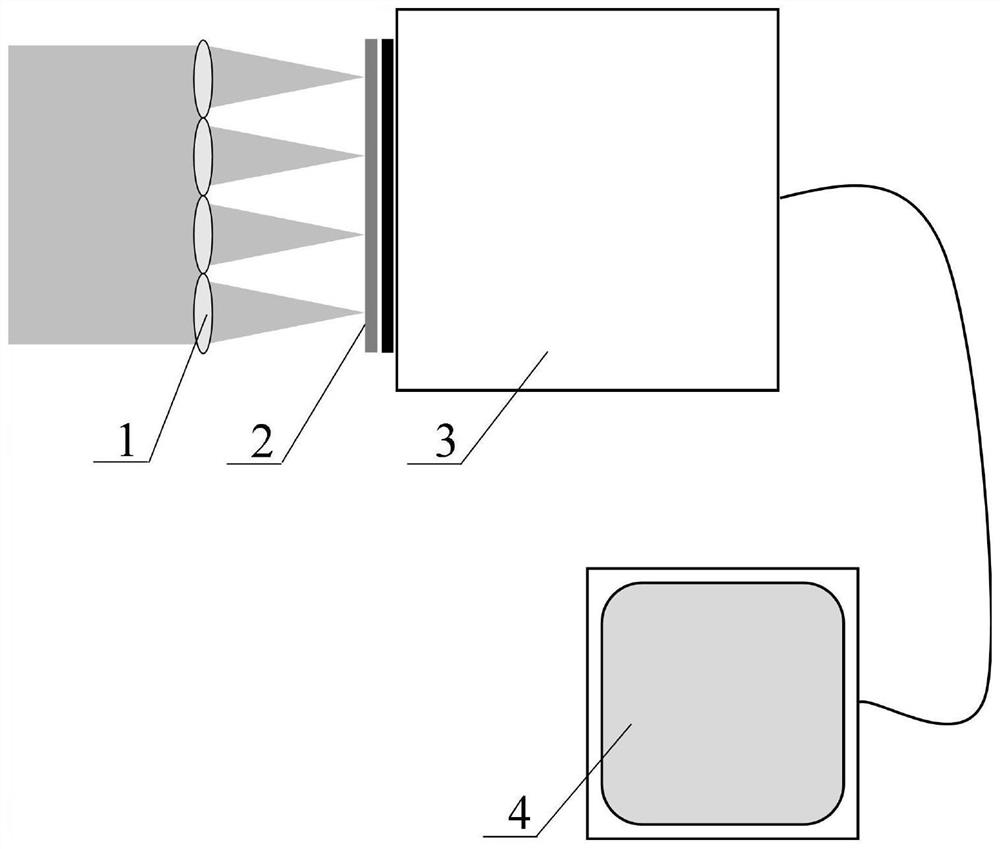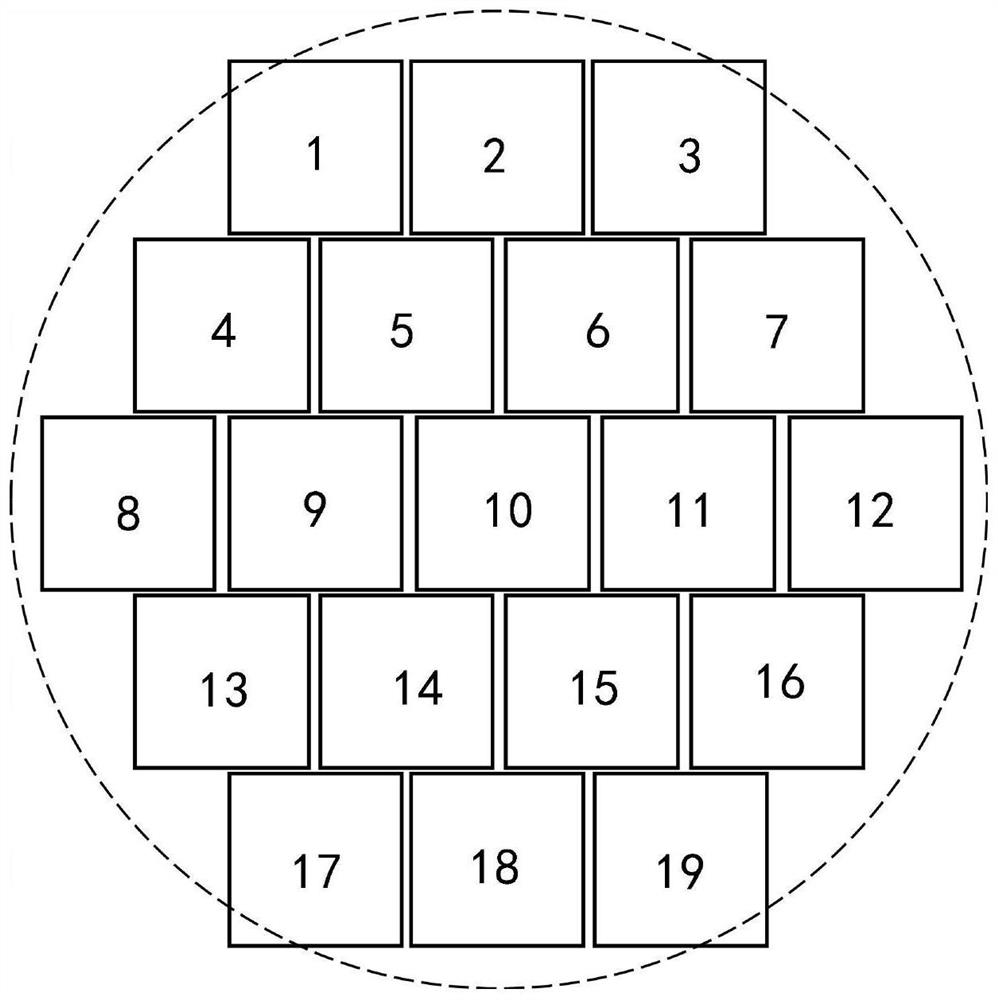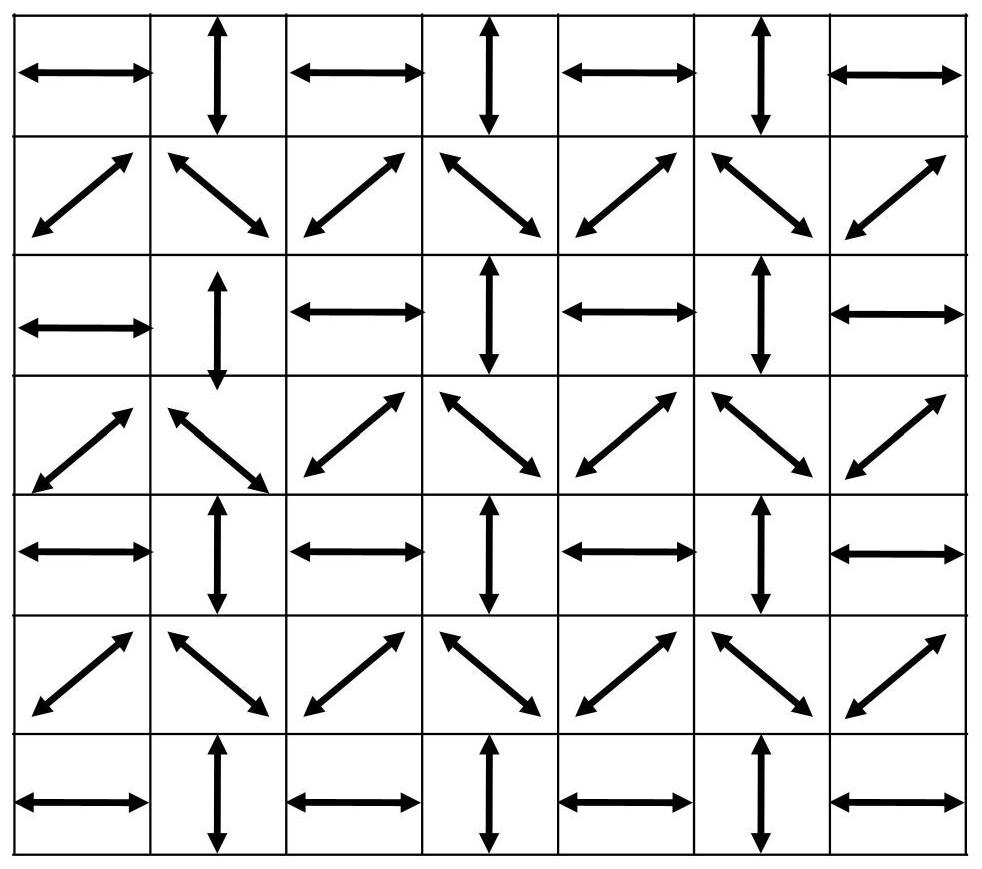A real-time polarization-modulated Hartmann-Shack wavefront detection device
A polarization modulation and detection device technology, applied in measurement devices, measurement optics, optical radiation measurement, etc., can solve the problems of reduced wavefront detection accuracy, indistinguishable, staying, etc., to improve the wavefront detection accuracy, compact device structure, The effect of fast detection
- Summary
- Abstract
- Description
- Claims
- Application Information
AI Technical Summary
Problems solved by technology
Method used
Image
Examples
Embodiment Construction
[0028] The present invention is further described below in conjunction with the accompanying drawings and specific examples.
[0029] like figure 1As shown, a real-time polarization modulation Hartmann-Shack wavefront detection device is composed of a microlens array 1 , a micropolarizer array 2 , a light intensity detector 3 , and a data processor 4 . The incident light including target light and background stray light enters the microlens array 1 and is divided into M×N sub-regions, each sub-region is a micro-lens, which images the divided incident light and enters the micro-polarizer array 2 corresponding sub-regions. The micro-polarizer array is a 2×2 periodic linear polarizer array. The angle between the analysis angle and the horizontal direction of four adjacent micro-polarizers is 0°, 45°, 90° and 135°, respectively. A single micro-polarizer The size is the same as or an integer multiple of the pixel size of the light intensity detector 3, and they are arranged in a ...
PUM
 Login to View More
Login to View More Abstract
Description
Claims
Application Information
 Login to View More
Login to View More - R&D
- Intellectual Property
- Life Sciences
- Materials
- Tech Scout
- Unparalleled Data Quality
- Higher Quality Content
- 60% Fewer Hallucinations
Browse by: Latest US Patents, China's latest patents, Technical Efficacy Thesaurus, Application Domain, Technology Topic, Popular Technical Reports.
© 2025 PatSnap. All rights reserved.Legal|Privacy policy|Modern Slavery Act Transparency Statement|Sitemap|About US| Contact US: help@patsnap.com



